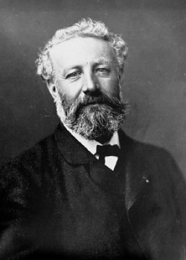
A Journey into the Interior of the Earth (eBook, ePUB)
Descend into Earth's depths on a daring journey of adventure and exploration
Übersetzer: Malleson, F. A.
Versandkostenfrei!
Sofort per Download lieferbar
1,99 €
inkl. MwSt.
Weitere Ausgaben:

PAYBACK Punkte
0 °P sammeln!
In "A Journey into the Interior of the Earth," Jules Verne masterfully blends science fiction with adventure, creating a narrative that takes readers deep beneath the Earth'Äôs surface. The novel follows Professor Otto Lidenbrock, an eccentric geologist who discovers an ancient Icelandic manuscript that opens the door to an extraordinary expedition. Employing vivid imagery and meticulous attention to scientific detail, Verne crafts a rich tapestry that reflects the 19th-century fascination with exploration and the natural sciences, echoing the spirit of inquiry that characterized the era of ...
In "A Journey into the Interior of the Earth," Jules Verne masterfully blends science fiction with adventure, creating a narrative that takes readers deep beneath the Earth'Äôs surface. The novel follows Professor Otto Lidenbrock, an eccentric geologist who discovers an ancient Icelandic manuscript that opens the door to an extraordinary expedition. Employing vivid imagery and meticulous attention to scientific detail, Verne crafts a rich tapestry that reflects the 19th-century fascination with exploration and the natural sciences, echoing the spirit of inquiry that characterized the era of Enlightenment. This work not only captivates readers with its thrilling plot but also engages them in philosophical contemplation about the nature of existence and humanity's insatiable curiosity about the world around us. Jules Verne, often hailed as the father of science fiction, wrote this novel in 1864 during a time when humanity was on the cusp of vast scientific discoveries. His own passion for exploration and technology is evident throughout his works, and personal interests in geography and paleontology heavily influenced his imaginative settings and plots. Born in Nantes, France, Verne's background as a playwright and his extensive travels fueled his creativity, allowing him to merge fact and fantasy seamlessly. "A Journey into the Interior of the Earth" remains a seminal work that appeals to not only fans of science fiction but also to those interested in adventure and philosophy. Its vivid descriptions and engaging narrative invite readers to embark on an intellectual journey, exploring the wonders of human imagination and scientific possibility. Verne's narrative will resonate with anyone intrigued by the enigmas of the world beneath our feet.
Dieser Download kann aus rechtlichen Gründen nur mit Rechnungsadresse in A, B, BG, CY, CZ, D, DK, EW, E, FIN, F, GR, H, IRL, I, LT, L, LR, M, NL, PL, P, R, S, SLO, SK ausgeliefert werden.














